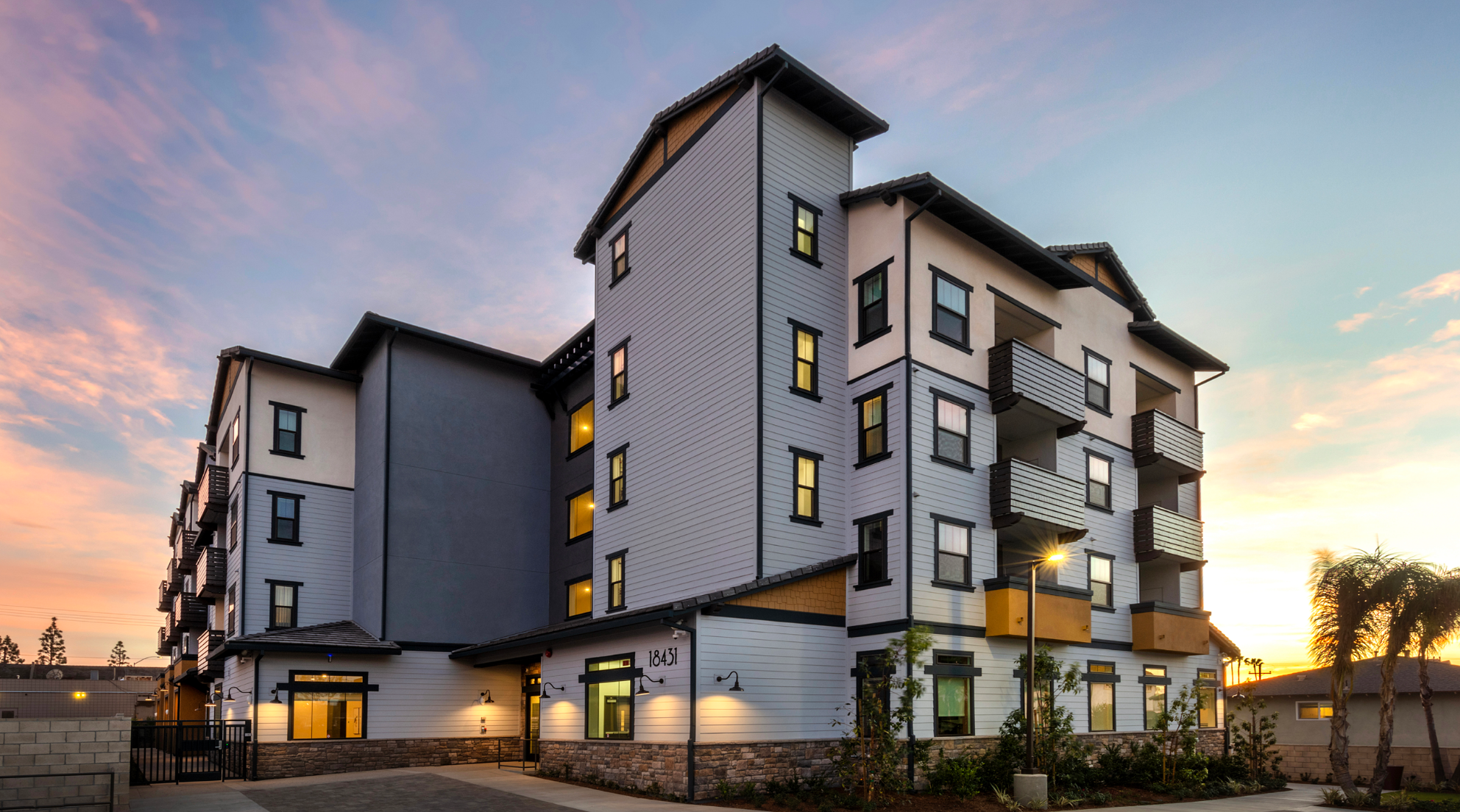Key Takeaways
- Take the first step: collaborate on a project that no single organization can solve alone. Start with a “minimum viable product” rather than waiting for the perfect plan.
- Employ “boundary crossers.” Leverage staff who have experience working across sectors to facilitate collaboration and relationship building.
- Involve the community. Engage people with lived experience of homelessness through surveys, focus groups, advisory roles, and paid positions.
Ending homelessness demands an all‑hands‑on‑deck approach — where housing and health care join forces to tackle the intertwined crises that no single system can solve alone. Yet the people working in these two sectors often operate in separate worlds, with different funding streams, timelines, and approaches to care.
That’s why CHCF supported Partnerships for Action: California Health Care & Homelessness Learning Collaborative. This two-year initiative, managed by the Center for Health Care Strategies, brought together eight cross-sector teams from across California to tackle collaboration challenges head-on. From 2022 to 2024 these teams, spanning urban and rural communities, worked to bridge the gaps between health care and homeless services in their local areas.
Their results offer real-world insights for anyone working to improve care for people experiencing homelessness. The teams each faced unique local challenges, but their collective experiences reveal common strategies that can help break down silos and build more effective partnerships.
Practical Strategies for Your Team
We believe their successes — and struggles — offer valuable strategies to help you and your partners improve care and outcomes for the people experiencing homelessness that you serve.
Whether you’re working for a managed care plan or providing direct services, the insights from this collaborative offer practical approaches for improving care coordination and outcomes.
Below are seven key lessons about cross-sector collaboration, followed by specific strategies tailored for each of these areas. We hope they are helpful to you!
Seven Insights for Effective Cross-Sector Partnerships
1. Don’t Just Talk, Do Something: Collaborate on a Project
Move beyond information sharing to tackle concrete challenges that no single organization can solve alone. Create action plans with clear goals, update them quarterly, and start with a “minimum viable product” rather than waiting for the perfect plan.
2. Get to Know Your Partners
Invest time in building relationships and understanding each sector’s values, limitations, and incentives. Clarify terminology and acronyms, conduct site visits, and attend conferences together to deepen cross-sector understanding.
3. Create Mechanisms for Accountability
Establish clear structures with defined responsibilities, consistent meeting schedules, and progress monitoring. Use work plans, assign task ownership, and consider external consultants or designated team members to maintain accountability.
4. Employ “Bridge Builders”
Leverage staff who have experience working across sectors to facilitate collaboration and relationship building. Consider creating dedicated positions like CalAIM (California Advancing and Innovating Medi-Cal) coordinators to bridge gaps between health care and homeless services systems.
5. Support Dynamic Partnerships
Expect partnerships to evolve naturally due to staff transitions, policy changes, or strategic pivots. Build in dedicated time and structure to assess team composition and adjust workflows as partnerships mature and circumstances change.
6. Involve the Community
Engage people with lived experience of homelessness through surveys, focus groups, advisory roles, and paid positions. Their insights inform program development and ensure services are responsive to community needs and changing circumstances.
7. Identify Opportunities for Broader Systems Impact
Consider how individual partnerships can scale from staff collaboration to organizational partnerships to coordinated systems change. Include leadership stakeholders, disseminate insights broadly, and engage entities with significant systems impact like Continuums of Care and managed care plans.
Want more details on these strategies? Read the full brief on the Center for Health Care Strategies website: Building Cross-Sector Collaboration Between Health Care and Homeless Services: Ground-Level Insights from California.
How They Did It: Stories of Building Cross-Sector Partnerships
The following profiles show how three teams in the collaborative came together to conduct different projects. Choose a team that’s urban (Orange), rural (Tuolumne), or both (Kings/Tulare) or a project that aligns with your interests to learn successful approaches to launching a cross-sector project.
Engaging the Community to Support People Experiencing Homelessness: Lessons from California’s Tuolumne County
Team Partners: Resiliency Village and Mathiesen Memorial Health Clinic
In this team, staff with lived experience of homelessness conducted community needs assessment surveys of people experiencing homelessness; the partners also organized public forums to better understand community needs. Based on what they learned, the two organizations created a cross-agency street outreach and mobile medicine team to address the health needs of people experiencing homelessness in Tuolumne County.
Connecting People in Recuperative Care to Health and Housing Resources: Lessons from Orange County
Team Partners: CalOptima Health, Illumination Health + Home, Orange County Health Care Agency, Orange County Housing Authority
This team had an explicit CalAIM focus. Their goal was to successfully place people living at a recuperative care center into permanent housing, and they used coverage of services such as housing navigation services, deposits, and tenancy sustaining services to help accomplish their goal. Of note, the had a “boundary crosser” as described in point 4 above, which helped to connect people to housing. Watch this short video to learn more:
Cross-Sector Solutions for Improving Health and Homelessness in Kings and Tulare Counties
Team Partners: Kings Tulare Homeless Alliance, Anthem Blue Cross, Health Net, and CalViva Health
The team started with developing a local asset map that cataloged available homeless services and identified gaps to address. To build capacity, they created positions — including a street medicine housing navigator — by leveraging new funding sources. Finally, the team initiated a data-matching project to identify people in the Homeless Management Information System, match them to managed care plan rosters, and then connect them to eligible services, including stable housing.
Strategies for Managed Care Plans
Under CalAIM, managed care plans (MCPs) are encouraged to provide Community Supports, including four that focus on housing. To deliver these services, MCPs must partner with community-based organizations with experience in delivering services to people experiencing homelessness. These two resources from the Partnerships for Action collaborative are especially informative for health plans:
Bridging the Gap: Building Partnerships Between Managed Care Plans and Homeless Service Providers
In this Q&A blog post, Kris Kunz, program director of housing and homeless strategy at Anthem Blue Cross, describes how MCPs can be effective partners with community-based organizations to better help their members experiencing homelessness. Before coming to Anthem, Kunz worked for many years as a homeless services provider. In this blog, he describes that he “can speak the housing language.” He has a fascinating vantage point into the role MCPs can play as partners.
Using Housing Data to Address Medi-Cal Member Needs: A Guide for Managed Care Plans
This guide outlines how MCPs can use various data sources to better understand the housing status of their members and adjust their interventions, networks, and activities accordingly. An accompanying matrix, Data Sources for Determining Members’ Housing and Homelessness Status (PDF), provides detailed information on specific data sources that Medi-Cal MCPs can use to develop an effective housing data strategy.
Strategies for Street Medicine and Mobile Clinic Providers
Two Partnerships for Action teams focused on developing street medicine or mobile clinic programs. One team was in rural Tuolumne County, and the other was in an area of Los Angeles. The teams used different approaches in developing their programs, and both offer lessons for other teams seeking to establish street medicine or mobile clinics. Read their stories:
- Building Health Access for People Experiencing Homelessness: Street Medicine Rooted in Outreach Programs (Los Angeles County)
- Engaging the Community to Support People Experiencing Homelessness: Lessons from Tuolumne County
Additional resources for organizations forming street medicine teams include these:
- Building Trust Through Integrated Outreach and Mobile Clinics for People Experiencing Homelessness: Tips for Providers outlines how organizations can build trust and provide immediate care for people experiencing homelessness as they prepare to launch mobile services.
- Negotiating Rates with Managed Care Organizations: Tips for Street Medicine Providers offers practical guidance on rate negotiation including understanding a street medicine program’s budget and costs, preparing for negotiation, and considering the managed care organization’s perspective.
- Adding Street Medicine to Scope of Project for Federally Qualified Health Centers provides a step-by-step framework to help FQHCs incorporate street medicine services into their scope of project, making these services eligible for Medicaid and Medicare reimbursement.
The Eight Partnerships for Action Teams
| COUNTY/PILOT TEAMS | PROJECT DESCRIPTION |
|---|---|
| San Diego County — 211 San Diego, People Assisting the Homeless, Health Net, YMCA, San Diego State University’s Social Policy Institute, McAlister Institute, San Diego Wellness Collaborative, and Legal Aid Society | Enhanced data exchange between health care, homeless services, and other community organizations to improve health and housing outcomes for people experiencing homelessness by creating a real-time bed availability tracker and closed-loop referral engine for medical respite care services. |
| Alameda County — Cardea Health, Alameda County Health Care for the Homeless, Alameda Health System’s Highland Hospital Bridge Program, and Bay Area Community Services | Created a peer harm reduction program, expanded access to medications for addiction treatment, developed a contingency management program, and adopted harm reduction practices to reduce overdose risk among people who use drugs and who reside at a transitional housing facility. |
| Los Angeles County — Akido Labs and Special Service for Groups/Homeless Outreach Program Integrated Care Systems (SSG/HOPICS) | Piloted a street medicine program that uses an outreach model to engage people and a clinical service delivery model to provide needed care, including primary care services and behavioral health services, and medications for addiction treatment. |
| Santa Clara County — Gardner Health Services and Catholic Charities | Employed a housing navigator to identify those eligible for new Medicaid services, such as Enhanced Care Management and Community Supports through a centralized, walk-up service called “The Window” that provides people experiencing homelessness access to mail and phone services, snacks, and information about community resources. |
| Orange County — Illumination Foundation, CalOptima, Orange County Health Care Agency, and Orange County Housing Authority | Exchanged data and developed workflows to create a robust continuum of care for people experiencing homelessness with high hospital utilization to seamlessly transition from the hospital to medical respite care and, ultimately, to permanent housing using mainstream housing vouchers. |
| Kings and Tulare Counties — Kings Tulare Homeless Alliance, Anthem Blue Cross, Health Net, and CalViva Health | Strengthened partnerships between the local Continuum of Care, health plans, and community partners to better serve people experiencing homelessness through Coordinated Entry System asset mapping and gap analysis, integrating CalAIM Enhanced Care Management and Community Supports, creating new positions at the Continuum of Care focused on CalAIM coordination and implementation, and improving data sharing across sectors. |
| San Luis Obispo and Santa Barbara Counties — Marian Regional Medical Center, 5 Cities Homeless Coalition, CenCal Health, Community Action Partnership of San Luis Obispo County, and Good Samaritan Shelter | Employed a homeless health coordinator to provide Enhanced Care Management to people experiencing or at risk of homelessness discharged from the hospital and facilitate cross-sector partnerships to strengthen the care continuum for those receiving care management. Analyzed street medicine and street outreach services in Santa Barbara and San Luis Obispo Counties to reduce duplication of services. |
| Tuolumne County — Resiliency Village and Mathiesen Memorial Health Clinic | Developed and conducted a survey to better understand the needs and desired services for unhoused community members and designed a mobile clinic to provide physical and behavioral health services. |
CHCF is deeply appreciative of the Center for Health Care Strategies for managing the two-year collaborative from 2022 to 2024. For more information and resources from the Partnerships for Action: California Health Care & Homelessness Learning Collaborative, please visit the Center for Health Care Strategies website.





